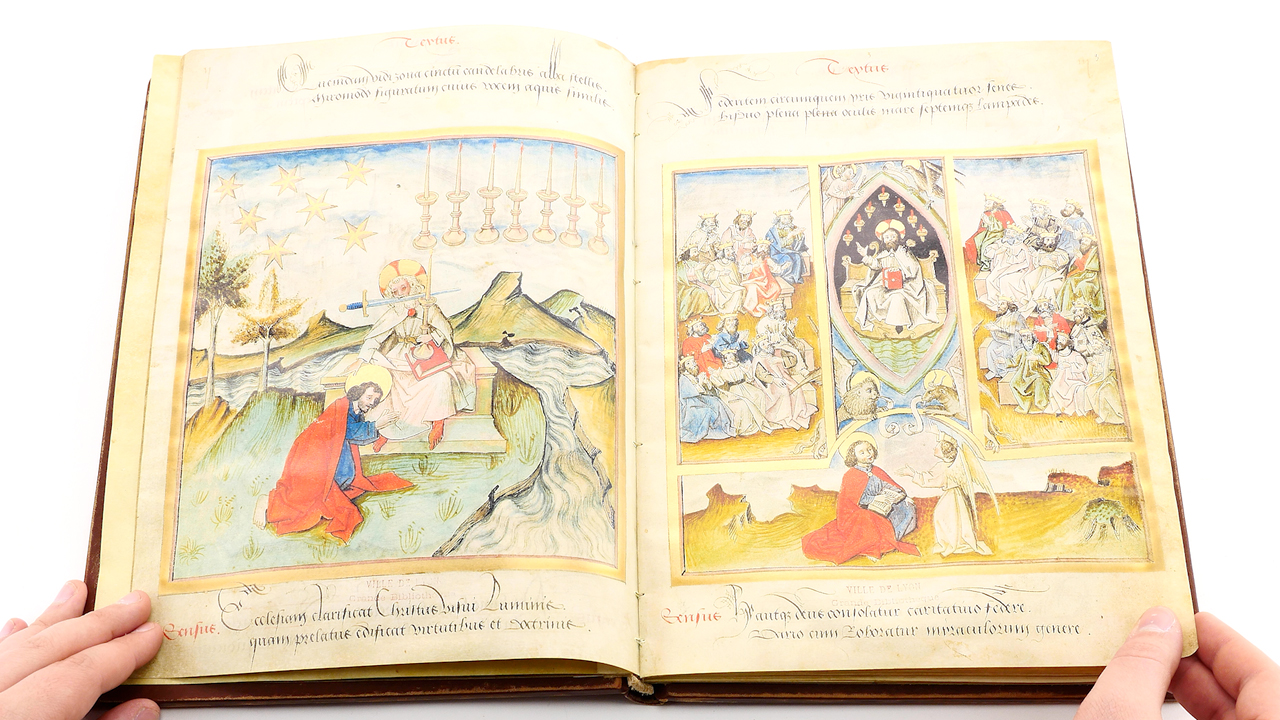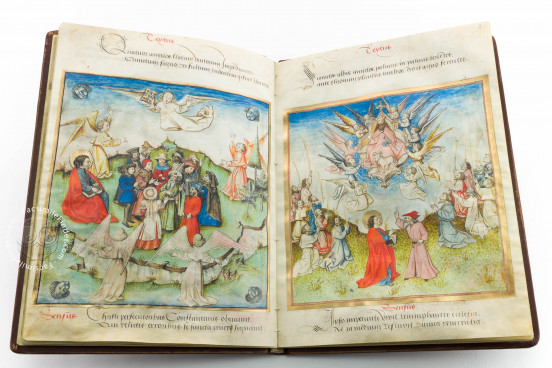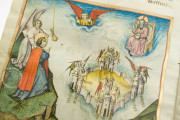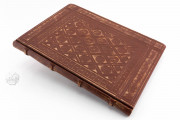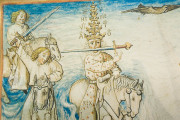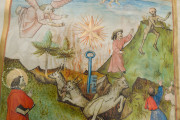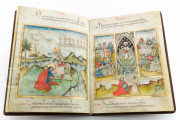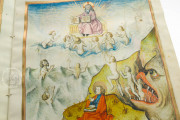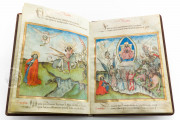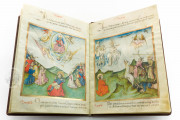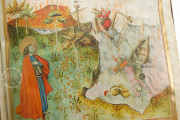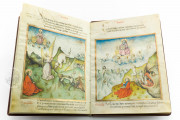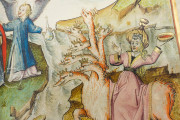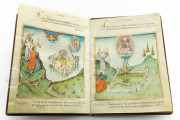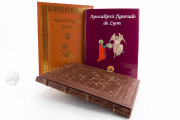The Illuminated Apocalypse of Lyon presents the Christian biblical Apocalypse, Saint John the Divine's vision of the end of time, as a series of forty-eight full-page miniatures accompanied by Latin verse inscriptions. It was made in northeastern France—perhaps Cambrai or Arras—around 1450. Its paintings are the work of the Master of the Missal of Paul Beye. It stands apart from the long tradition of illuminated English and French Apocalypses for its paintings' full-page format and iconographic inventiveness.
The text is a poem of 230 verses. Most are rhyming couplets inscribed above and below the miniatures, the couplet above paraphrasing the Bible (labeled textus), and the couplet below providing an interpretation (marked sensus). An introduction, which explains how the reader might approach the text and images, and a conclusion bookend the sequence of miniatures.
Exceptional Apocalypse Images
While many of the nearly 200 illustrated manuscripts of the Apocalypse can be grouped into families that share pictorial cycles perpetuated over generations, the Illuminated Apocalypse of Lyon is a rare exception. The Master of the Missal of Paul Beye offers a creative interpretation of the summary text to create a textually faithful pictorial cycle with no visual precedent.
A Master Painter of Manuscripts Sacred and Secular
The Master of the Missal of Paul Beye is named for his Crucifixion miniature in a missal commissioned by a canon of the cathedral at Cambrai (Cambrai, Médiathèque d'Agglomération, MS 151). He also provided the miniatures for a deluxe copy of Le Champion des dames, an extensive French allegorical poem in defense of women, made for Philip (1396-1467), Duke of Burgundy (Paris, Bibliothèque nationale de France, MS fr. 12476).
The master's painting style, on full display in the Apocalypse, is characterized by strongly outlined, stocky figures with expressive gestures. His colors, which include an intense vermillion, are boldly applied. The scenes in the Apocalypse are presented in deep, craggy landscapes, and Saint John, always shown witnessing his vision, stands out in his vermillion cape.
A Burgundian Script
Bartélemy Poignare, the scribe of the Paris Champion des dames, may have written the manuscript's elegantly calligraphic text. The script is French Bâtarde, also known as "Burgundian letters," accentuated with broad pen stroke embellishments called cadelles. The headings (textus and sensus) are written in bright red. It has been suggested that Poignare may himself be the Master of the Missal of Paul Beye.
From Northern France to the Rhône-Alpes
The Apocalypse of Lyon remained in northeastern France through the seventeenth century, with sojourns in the collections of Alexandre le Blancq, Maximilien-Charles de Coupigny, and Louis de Valençon, before finding its way to Lyon.
We have 1 facsimile edition of the manuscript "Illuminated Apocalypse of Lyon": Apocalipsis Iluminado de Lyon facsimile edition, published by Orbis Mediaevalis, 2009
Request Info / Price
